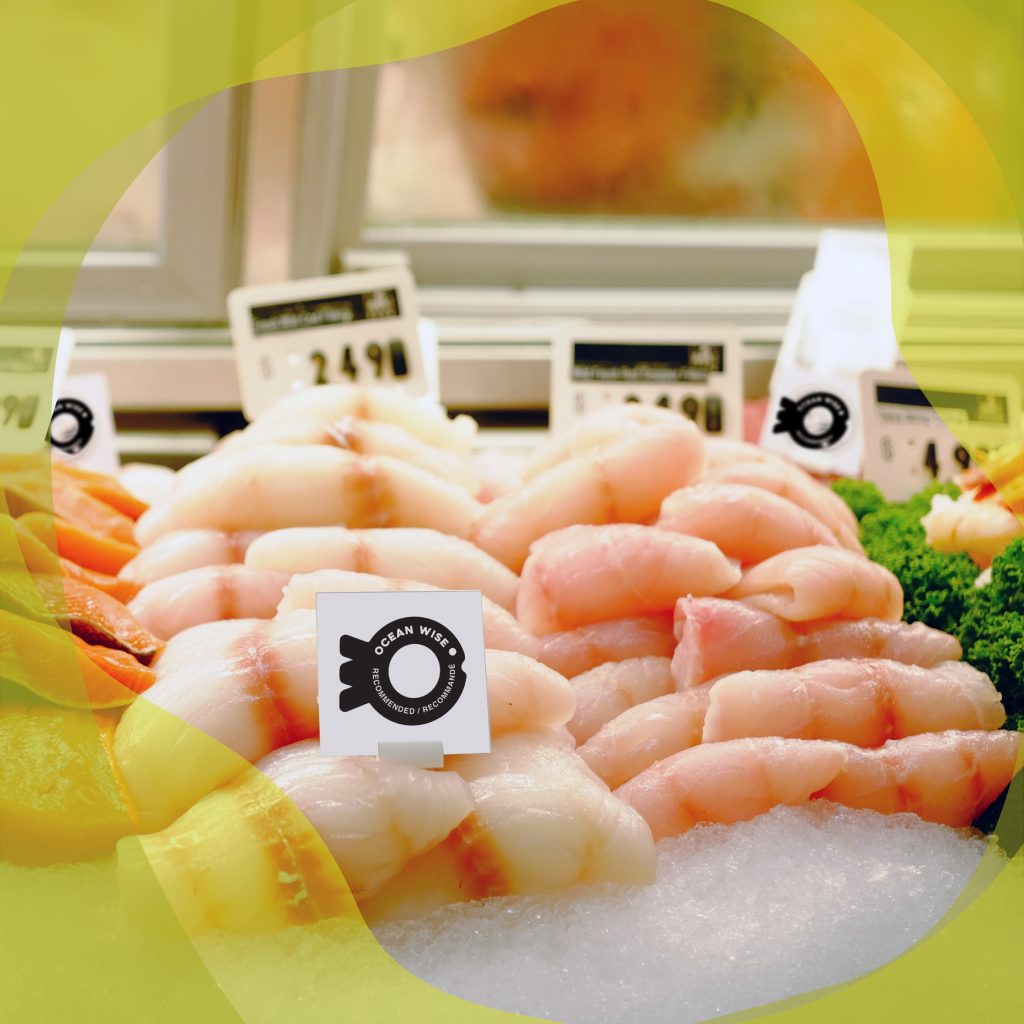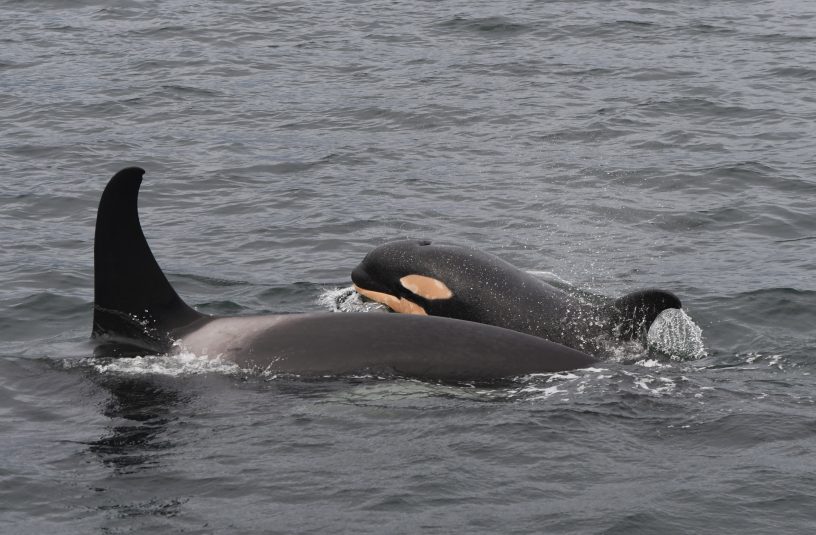My Whale Report News – April 2024

INTRODUCING SOME ‘SPLASHY’ NEW WHALE REPORT UPDATES!
One of the most exciting experiences one can have along our coast is spotting a whale in the wild. With its easy reporting platform, built-in identification guide, and interactive Marine Mammal Regulations map, the WhaleReport app is the perfect accessory to amplify your whale spotting experience. WhaleReport allows observers to report their whale sightings easily from their phones the minute they see a whale. This information is critical for informing conservation-based research and is used to alert large commercial vessels to the presence of whales in their travel path via the Whale Report Alert System (WRAS), reducing the risk of ship strike and disturbance.
Our network of over 7,300 citizen scientists regularly report their whale sightings via the WhaleReport app. However, no one wants to spend more time looking at their phone than at the whales they are reporting! We recognize the desire for a quicker and more user-friendly reporting system on the app, and we have been hard at work over the last year streamlining it to make the process of reporting sightings more efficient. We have changed the descriptions of the data fields to provide more clarity as to what information is required when reporting and removed superfluous information (such as wind speed and sea state), carving minutes off the time it takes to submit a report. This means more whale viewing and less whale reporting, while still making a difference for the whales! It is anticipated that the new, streamlined user interface will encourage more coastal community members to report their sightings in real time, resulting in more WRAS alerts to reduce the risk of ship strike and disturbance.
We also recognize the dedication of our sightings network and want to demonstrate the positive impact that sightings reports have on whale populations in British Columbia and Washington State. Check out the new “Recent Whale Sightings and News” feature in the app, which contains a map of whale sightings reported in the past month, a map of the WRAS alerts generated by these reports, a list of top observers that month, photos submitted by observers, and a summary of recent whale news and research.
These new updates are sure to make a splash! Please update your WhaleReport app to the latest version, and happy whale reporting! Before you head out on the water, make sure to take 5 minutes to download the app and set it up by entering your details. We will only use your contact information to ask you any follow up questions about your sighting reports and will not contact you for any promotional reasons. And remember, you can also report on your computer using our web app too by visiting WhaleReport (wildwhales.org).
APRIL SIGHTINGS ROUND-UP



Left to right: photo credit: Kumiko Hawkes, Bigg’s killer whales; Kathleen Durant, harbour porpoise; Val Watson, Southern Resident killer whales


YOUR SIGHTING REPORTS HAVE A BIG IMPACT!
Thank you for taking the time to report your sightings! Sighting reports from citizen scientists like yourself are critical for monitoring and protecting at-risk cetaceans (whales, dolphins, and porpoises) and sea turtles in our waters.
Frequently monitoring the distribution and abundance of cetaceans and sea turtles is key to understanding their population status and the threats they face. However, the vast and remote nature of our coastline can make frequent assessment of these populations via traditional scientific surveys challenging. As a solution, Ocean Wise stewards the Ocean Wise Sightings Network (OWSN), a diverse and dedicated network of coastal community members who
regularly report their sightings to WhaleReport in support of conservation-based research.
The OWSN database is the primary source of information on the occurrence of cetaceans in British Columbia. Since 1999, subsets of this database have supported hundreds of conservation-based research projects.
SIGHTING REPORTS IN YOUR AREA
In addition to supporting research, real time sighting reports are sent to large ships via the Whale Report Alert System (WRAS). The WRAS privately broadcasts pertinent details of whale presence to large commercial vessels such as freighters, tankers, cruise ships, and ferries. Information on whale presence is obtained from WhaleReport, the Acartia Data Cooperative (Acartia.io), hydrophones, and infrared cameras.
The alerts inform ships of whales in their vicinity, better enabling them to undertake adaptive mitigation measures, such as slowing down or altering course, to reduce the risk of strike and disturbance.
Map of monthly cetacean sightings:
Zoom in and out to view what species were spotted and where
Map of alerts sent via the Whale Report Alert System:
Zoom in and out to view where alerts were sent to large vessels of cetacean presence
YOUR REAL TIME REPORTS PROTECT WHALES!
12 of the 23 species of cetaceans (whales, dolphins, and porpoises) found in British Columbia are currently listed as ‘At Risk’ under Canada’s Species at Risk Act. Vessel strike and disturbance are listed as major threats to the recovery of all 12 listed species.
Cetaceans can be struck and fatally injured by ships. Studies have demonstrated that the probability of striking cetaceans increases with ship speed. Ships traveling below 10 knots have a low risk of striking and fatally injuring a cetacean, whereas travelling at greater than 17.5 knots greatly increases that risk. Reducing speed in the presence of cetaceans allows more time for the animal to avoid the oncoming vessel and for the vessel to adjust its course.
Cetaceans are also affected by vessel presence and noise. Vessels may disturb or alter activities essential to survival, such as foraging, diving, resting, avoiding predators, communicating, socializing, mating, and nursing calves. Vessel noise can generally be decreased by operating below cavitation inception speed and avoiding rapid acceleration, as well as keeping a distance of 200m or more from cetaceans (400m or more for killer
whales!).
The WRAS helps large ships mitigate their impact on vulnerable cetacean populations by increasing awareness of whale presence and giving them time to enact mitigation measures such as slowing down or diverting course.

This project was partially funded by the Government of Canada under Fisheries and Oceans Canada’s Habitat Stewardship Program.
Ce projet a été partiellement financé par le gouvernement du Canada dans le cadre du Programme de conservation des habitats de Pêches et Océans Canada
Posted June 3, 2024 by Rosemary Newton







